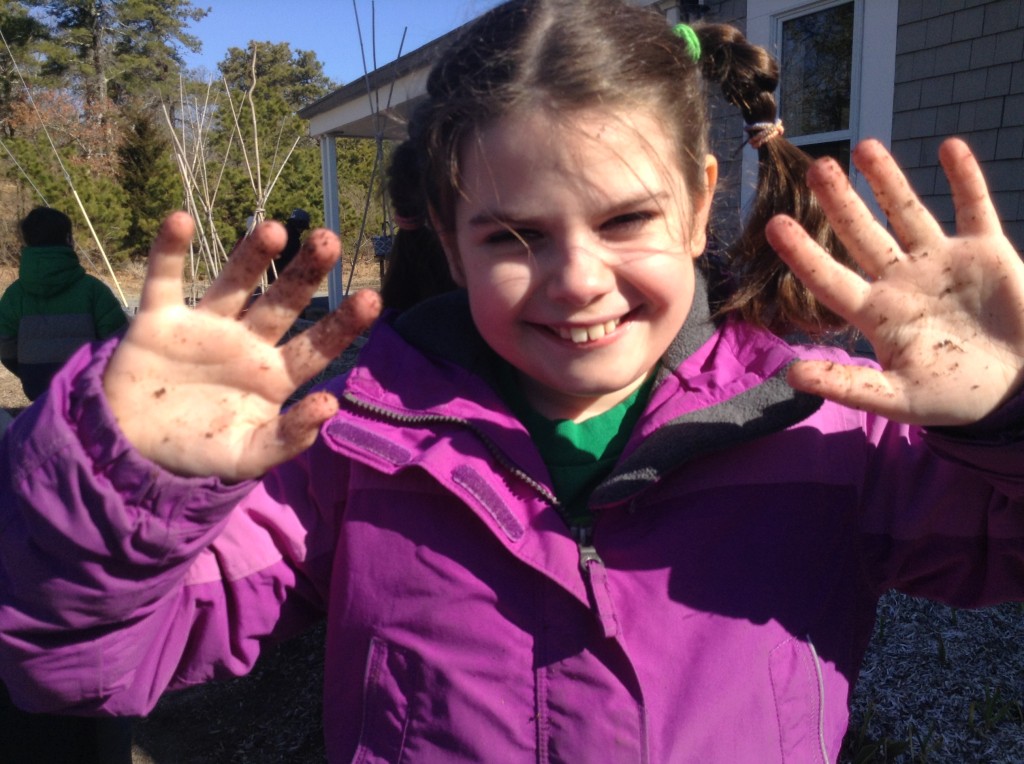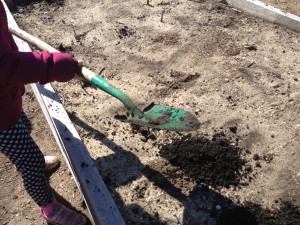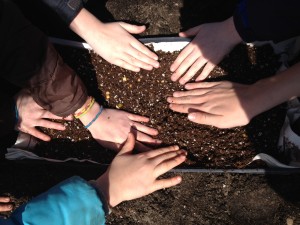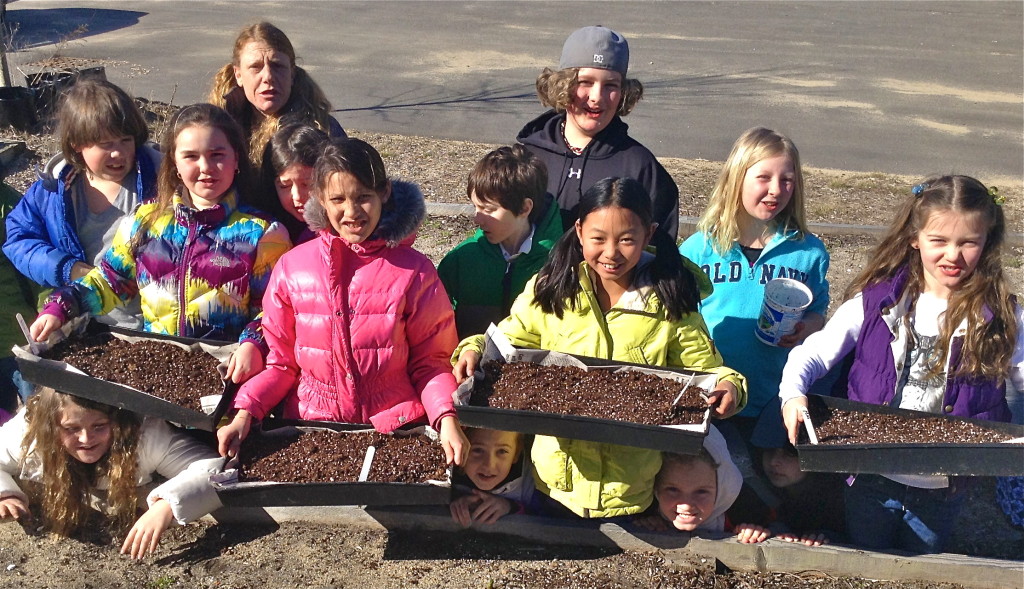With a cheshire cat smile, a third grade girl gleefully held up both hands and said, “I have dirty hands!” Her friend chimed in, “That’s part of gardening – getting dirty!”
And its dirt we’re focused on now. A spring garden needs good dirt, for without rich soil our plants won’t produce food for us to eat. Just like our bodies, plants need healthy nutrients and clean water to survive. And a plant’s breakfast, lunch and dinner come from the soil.
The children are now composting the school’s breakfast and lunch waste, and we are learning about how each of us can add to a compost pile. After our compost ages, we can give our plants the nutrients we made ourselves. But for now, we are “amending” the soil with a recent delivery from Bayberry Gardens. In fact, it’s kind of like Bayberry delivered a delicious dinner for our garden.
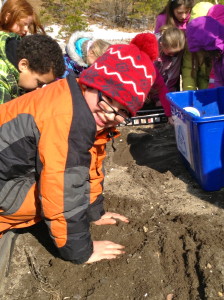 “Wow…” remarks one child to another, “plants are a lot like us!”
“Wow…” remarks one child to another, “plants are a lot like us!”
“Yes,” we laughed. “They even like take-out!”
Outside Fun
Temperatures still hover in the uncomfortable 40 degree (F) range with a biting cold wind, so we bundled up and got outside to work in the dirt. While the previous week’s seeds planted in flats wait quietly under the soil, quietly germinating, the garden beds need to be prepped.
The 5th graders, full of pre-adolescent energy, took the lead role in hauling recently delivered compost (thank you Bayberry Gardens!) to the beds. This required shovels, digging and pushing wheelbarrows. This is “Heavy Work,” which activates the nerves (proprioceptors) that facilitate filters and organization in the brain. The kids engaged in boisterous fun while they worked and when they returned to class they settled down quickly with renewed ability to concentrate!
The 4th grade students lined up on both sides of the raised bed and took turns scooping compost and delivering it to a designated place in the bed. It looked like a relay race.
Kindergarten and third graders weeded the raised beds, making sure to get the roots. We learned that plants can often regrow if we don’t pull the roots – many times what we can’t see is just as important as what we can – in plants and in life! For the K’s it was a great exercise in strengthening their pincer grasp. For the third graders, they employed visual perceptual skills, scanning the beds to seek out the weeds missed by their predecessors.
- Several inches of good compost shoveled on top of the garden each year “feeds” the garden’s plants
- Not to stand on the soil because it gets too compact and makes it hard for baby seedlings to grow
- Mulch helps to keep soil moist and blocks weed growth (Our garden uses eel grass gathered at a nearby beach – hoping for a seaweed gathering field trip soon!)
- Earthworms are a sign of healthy soil and a best friend to the garden
Each group got to plant as well. To feed a school takes a lot of seeds!
They planted:
- Herbs (Parsley and Basil)
- Lettuce and spinach in large free standing pots
- Pea seedlings for micro-greens
Equipment:
- Planting soil and Compost
- Shovels
- Wheelbarrow, wagon or large bins dragged/pushed or on a cart
- Sieve (or onion bag to shake out planting soil)
- Flats and plugs
- After soil prepped, use yogurt scoops* to fill plugs and trays
- Seeds broadcast in trays (peas) and individually placed in plugs (herbs)
- Seeds (greens) broadcast in large plastic pots
- Seeds covered finely with soil pressed through a sieve
*Determine size by how many scoops needed to make sure everyone has a turn. If you have a large group and only a few flats to fill, use smaller sized scoops.
Benefits:
- Students learn about the importance of healthy soil and how to create this nutrient rich soil.
- Students recognize the connection between the soil, the plant, our food and our physical health.
- Students learn by doing: proper techniques in prepping beds for planting.
- Students learn by doing: proper techniques in planting flats and plugs for seedlings.
- Heavy work of lifting and shoveling activates proprioceptors that help with attention and brain organization.
- Shoveling and hauling are cardio workouts…and muscle strengtheners!
- Shoveling requires two hands-building bilateral motor coordination.
- Weeding strengthens muscles in the hands and fingers.
- Working the soil is a fabulous tactile activity.
This post reflects the partnership and creative collaboration between The Motor Story and Sustainable CAPE.

